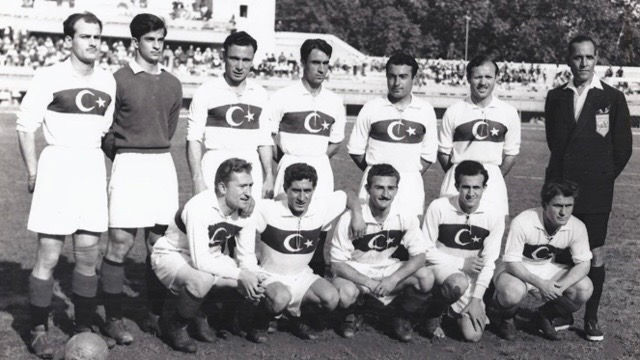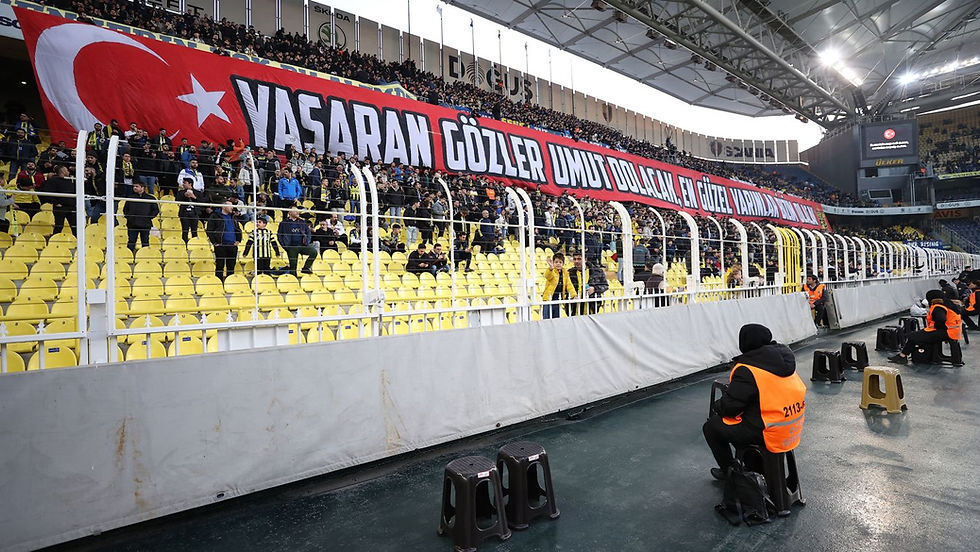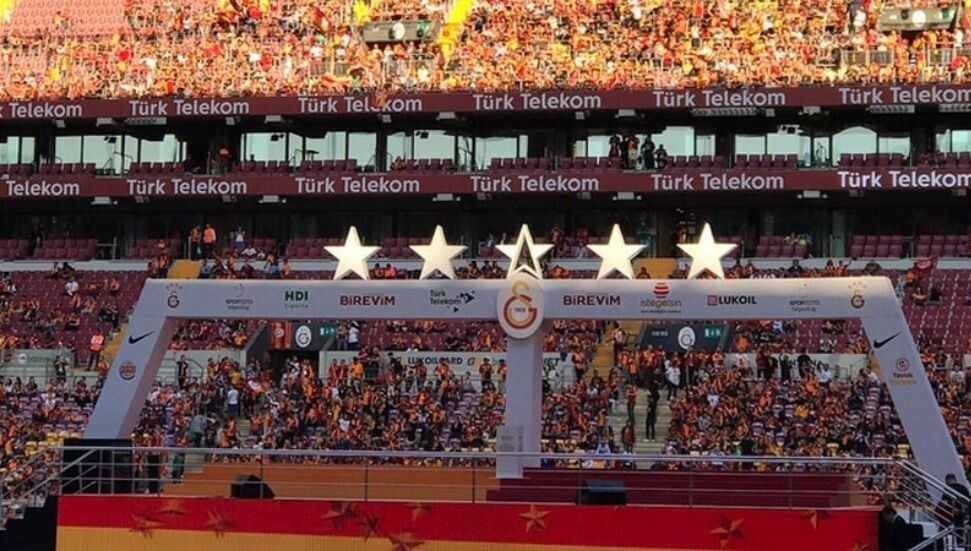A Century of Passion: The History of Turkish Football
- gorogluberkin
- Jun 24
- 5 min read

Football may not be the sport in which Turks are the most successful, but Turkey is undoubtedly a football nation. According to local sources, this passion began to blossom in the late 19th century.
The Ottoman Empire hosted a variety of ethnic groups, and it is said that the first steps of Turkish football were taken through matches organised among minority communities and Levantines. Over time, amateur clubs were established, which played a crucial role in popularising football in Turkey.
In 1905, Galatasaray, one of today’s giants, was founded by students of Galatasaray High School — one of the most prestigious schools in Turkey and Europe. In 1907, Fenerbahçe was founded by a young group, and the competition on the football fields began to grow slowly. After these two clubs, Beşiktaş — which was founded in 1903 but initially focused on other sports — took steps in 1910 to include football. Thus, the foundation of the fierce competition between Istanbul’s “Big Three” clubs was laid.
Early Federation and Professionalism

Just before the declaration of the Republic (October 29, 1923), the Turkish Football Federation was founded (April 23, 1923), and in the same year, Turkey was accepted as a member of FIFA on May 21.
The acceptance of professionalism in 1951 transformed football into a profession in Turkey and made it more organised. Turkish football leagues were played in different formats until they reached their current structure. After the Millî Küme (National Cluster) between 1937–1943, Maarif Mükafatı (1944–1951), and Millî Eğitim Kupası (National Education Cup), the Millî Lig (National League) — today’s Süper Lig — was officially established in 1959.
Evolution of the League Structure
Since 1959, the Millî Lig and cup competitions have been organised regularly. With the establishment of lower leagues (II. and III. Leagues), football in Turkey grew to become the country’s leading sport.
The three-point system was introduced in the 1987–88 season, and from the 1994–95 season onward, the league has generally been played with 18 teams. The league was officially renamed the Süper Lig in the 2001–02 season.
1959–1970: Istanbul Dominance

Between 1959 and 1970, the Süper Lig championship was primarily dominated by Fenerbahçe and Beşiktaş. Galatasaray, however, lagged behind during this period.
That changed with the arrival of English coach Brian Birch. Under his leadership, the Yellow-Reds made a historic breakthrough — winning three consecutive championships in the 1970–71, 1971–72, and 1972–73 seasons, returning to the top of the league.
After this successful period, Galatasaray entered difficult years. Following their 1972–73 title, they did not win another league championship for 14 years. During this time, Fenerbahçe and Beşiktaş made significant moves to strengthen their squads and dominate the league.
A major turning point came with Trabzonspor’s championship in the 1975–76 season. As the first team outside Istanbul to win the league, they earned the title of the ‘new big club’, paving the way for other Anatolian teams to challenge the dominance of the Big Three.
1980s and First European Successes

The 1980s marked a new era with rising competition and identity in Turkish football.
Beşiktaş, with key players like Metin Tekin, Ali Gültiken, and Feyyaz Uçar, built a legendary trio and dominated the league, inspiring fans across the country. Many babies born in that period were even named Metin, Ali, and Feyyaz in their honour.
Fenerbahçe remained competitive with strong squads and international success, notably eliminating Manchester City in the 1968–69 season.
For Galatasaray, the 1986–87 season ended a 14-year title drought, driven by the influence of German coach Jupp Derwall. His modern football philosophy and emphasis on youth development transformed not only Galatasaray but also Turkish football as a whole.
Galatasaray began making waves in Europe as well — reaching the quarter-finals of the European Cup in 1962–63 and 1969–70, and going as far as the semi-finals in 1988–89.
Beşiktaş and Trabzonspor also began to register important performances in European competitions, helping Turkish football gain visibility on the international stage.
In 1996, Turkey qualified for its first European Championship (EURO 96) — a moment that raised the country’s footballing profile and increased domestic enthusiasm and investment.
2000s: The Golden Era and Deep Rivalry

The year 2000 brought Turkey’s greatest footballing success.
Between 1996–2000, Galatasaray won four consecutive league titles and lifted the UEFA Cup, later defeating Real Madrid to win the UEFA Super Cup. They even topped the IFFHS World Club Ranking briefly, showcasing Turkish football to the world.
At the 2002 World Cup, Turkey finished third, solidifying its place among world football’s elite.
Fenerbahçe, led by Aziz Yıldırım, modernised their stadium and brought in global stars such as Alex de Souza, Roberto Carlos, and Nicolas Anelka, and in 2007–08, reached the Champions League quarter-finals.
In EURO 2008, the Turkish national team again impressed, reaching the semi-finals and becoming one of the most thrilling sides in the tournament.
2011 Match-Fixing Scandal and Aftermath

On July 3, 2011, Turkish football faced its biggest crisis with the match-fixing scandal. Several players and executives were detained. UEFA banned Fenerbahçe from the Champions League for the 2011–12 season, with Trabzonspor taking their place.
To limit damage to the league’s image, the Süper Final (play-off) system was introduced. In 2012, punishments were handed down, but later it emerged that some law enforcement figures involved were themselves acting unlawfully.
Following retrials in 2015, the accused were acquitted due to flawed evidence and unfair trial procedures. This became known as the “Match-Fixing Conspiracy,” though legal and public debates continue to this day.
Recent Era: Stars, Rivalries, and New Beginnings

Since 2011–12, Galatasaray has rebuilt and emerged dominant again. Signings like Didier Drogba, Wesley Sneijder, Lukas Podolski, Dries Mertens, and Mauro Icardi raised their profile and helped them reach the Champions League quarter-finals in 2012–13.
Fenerbahçe also attracted stars like Robin van Persie, Dirk Kuyt, Diego Ribas, Nani, Mesut Özil, and Edin Džeko, boosting the Süper Lig’s global appeal. They reached the UEFA Europa League semi-finals in 2012–13.
Beşiktaş, under Şenol Güneş and Sergen Yalçın, had domestic success and a UEFA Europa League quarter-final appearance. However, financial issues have recently pushed the club into a rebuilding phase.
From the 2025–26 season, a new foreign player rule will be in effect: teams can register up to 12 foreign players, plus 2 additional foreign players born in 2003 or later, aimed at supporting youth development.
Modern League Balance and Star System

Today, Süper Lig clubs display their titles with stars on their jerseys, awarded for every five league championships.
As of now:
Galatasaray → 25 titles → ⭐⭐⭐⭐⭐
Fenerbahçe → 19 titles → ⭐⭐⭐
Beşiktaş → 16 titles → ⭐⭐⭐
Trabzonspor → 7 titles → ⭐
These stars are symbolic of dominance and reflect the fierce ongoing rivalry in Turkish football.






Comments